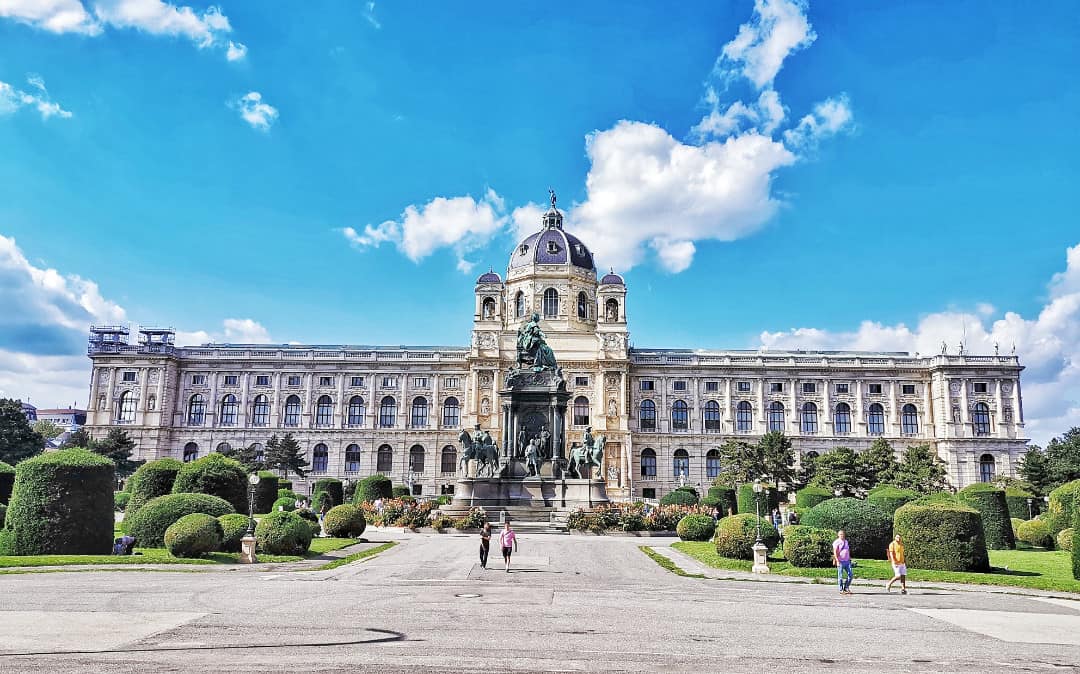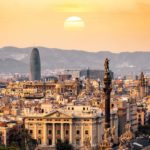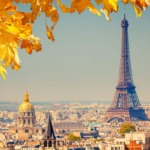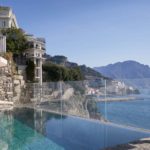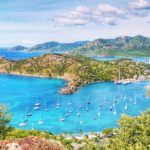Top Museums in Vienna
Vienna is an incredible city to live, and I am really proud to call Vienna after 11 years my home town. Today I want to show you my favorites places in Vienna, and the top 10 places to visit in Vienna. Vienna has a rich culture, with a lot of museums, but before you make your list of the museums you should visit, I am going to tell you what you can find in each museum. My favorite museum of all is the treasury museum, the National Library, the science museum and the museum of art history.
What you need to know about Austria
- Austria is a small country in central Europe, bordered by Hungary, Slovakia, Czech Republic, Germany, Switzerland, Italy, and Slovenia.
- The official language is Austrian German.
- Vienna is the capital of Austria.
- Austria has 83,879 km2.
- The current population is 8.857.960.
- Österreich, which is the German name of Austria, derives from the old German Ostarrichi, which meant ”Eastern Realm”.
- Austria has 10 world heritage sites named by UNESCO: The historic Center of the City of Salzburg, The Palace and Gardens of Schönbrunn, Hallstatt-Dachstein / Salzkammergut Cultural Landscape, Semmering railway, The Historic Center and Schloss Eggenberg in the city of Graz, Wachau Cultural Landscape, Fertö / Neusiedlersee Cultural Landscape, The historic Center of Vienna, Prehistoric pile dwellings around the Alps, and the Ancient and Primeval Beech Forest of the Carpathians.
Interesting Facts about Austria
Austria has an interesting Coffee culture. After the Turks left Vienna in 1683, they left a large number of coffee beans, introducing the great Viennese tradition of the Coffee House (Kaffeehaus).
Vienna has the oldest Zoo in the world, founded by Emperor Franz Stephan in 1752.
The bodies of the Habsburgs Emperors, who ruled from 1278- 1918, were divided in 3 and buried in 3 different locations, the intestines in St Stephans Cathedral, the actual bodies in the Imperial Vault at the Kapuzinerkirche (Capuchin Church), and the hearts in the Augustinerkirche (Church of the Augustinians).
The famous Vienna Boys Choir was founded in 1498 by the Emperor Maximillian I.
Although the Tafelspitz is regularly called the Austrian National dish, the most famous dish is Wiener Schnitzel.
The Zentralfriedhof (Central Cemetery) is the largest European cemetery, with over 2,5 million tombs, including Brahms, Beethoven, Schubert, Gluck, Schoenberg, and Strauss.
You can find the world’s largest emerald (2860 carat) in the Imperial Treasury museum, as well as the Holy Grail and the holy lance.
The world’s oldest restaurant still in operation is the Stifkeller, founded in 803 in Salzburg.
The Roman Emperor Marcus Aurelius died on March 17 in A.D 180 in Vienna.
The highest point in Austria in the Großlockner at 3,798 m.
Best places to visit in Vienna
Here you have the top 10 places to visit in Vienna
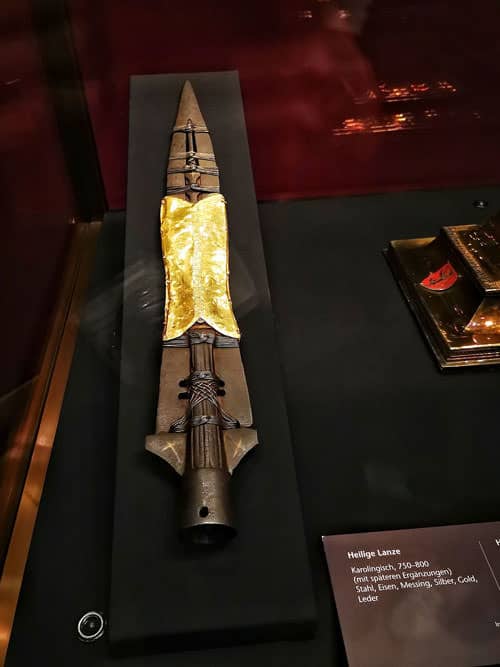
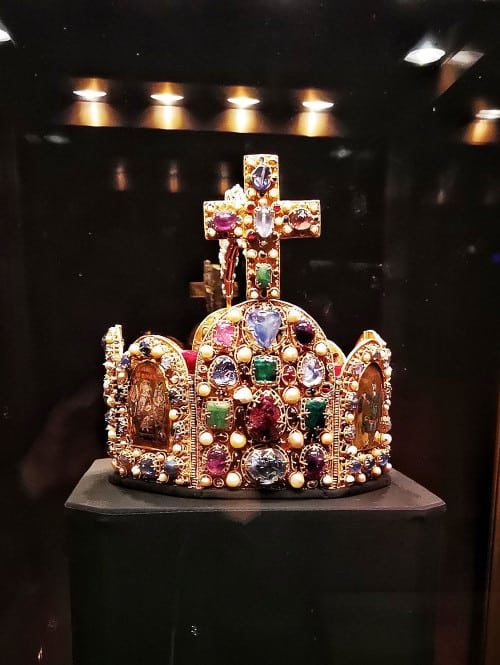
Kaiserliche Schatzkammer – The Imperial Treasury Museum in Vienna
Located in the city center, very easy to access, it offers an outstanding collection of the Austrian Empire Crown as well as ecclesiastical treasures covering over a thousand years of European history, like the Holy grail and the Holy Lance. Moreover, the museum has the world’s largest emerald (2860 carat).
Entry card: 12 euro
Österreichische Nationalbibliothek – The Austrian National Library
It is located in the Neue Burg wing of the Hofburg Palace and it was established in 1368 as the Imperial Court Library. The Austrian National Library is the largest in Austria with more than 12 million items and various collections.
It has a collection of Manuscripts and rare books, including the Vienna Dioscurides, which was inscribed on UNESCO Memory of the World Program.
It has a papyrus collection.
- Has a Map Collection and a Globe Museum
- Entry card for the State Hall: 8 euro
- Entry card for the literature Museum: 7 euro
- Entry card for Globe, Papyrus and Esperanto Museum: 5 euro
Hofburg Palace in Vienna
It is located in the city center and was for more than 600 years the residence of the Austrian monarchs. It was the political center of the monarchy until 1918. Today, you will find inside the Hofburg: The Sisi Museum, The imperial Apartments, and the Silver Collection. You can learn about the history of the imperial family.
Entry ticket: 15 euro
Spanish Riding School
It is located inside the Hofburg palace, between Michaelerplatz and Josefplatz, and it was built between 1729 -1735. The Austrian institution dedicated to the training of Lipizzaner horses and was first named during the Habsburg Monarchy in 1572.
The school has antecedents in military traditions dating back to Ancient Greek and Xenophon and it is one of the most prestigious classical riding academies in the world. It has a lot of guided tours and events.
Morning exercise entry ticket: 15 euro
Guide tour: 18 euro
Performance from 27 euro
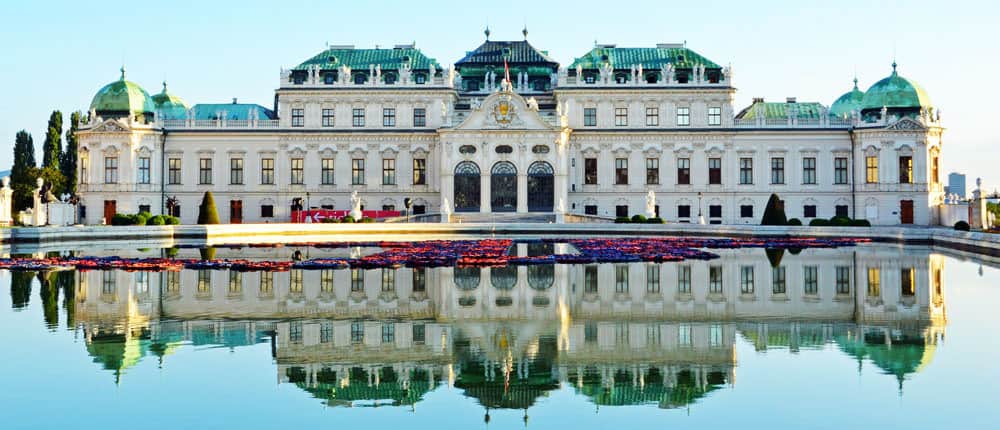
Belvedere Museum
It is located in the 4th district in Vienna, and is one of the leading museums worldwide, with collections from the middle ages to the present day. It has 3 major exhibitions with permanent and temporary exhibitions
Lower Belvedere: Medieval Majesty, Johanna Kandl and Kiki Smith exhibitions and the entry ticket is 14 euro
Belvedere 21: Has temporary exhibitions, and entry ticket is 8 euro
Upper Belvedere has a permanent collection of Gustav Klimt, Oskar Kokoschka, Egon Schiele, between others, and the entry ticket is: 16 euro.
Mumok Museum
It is located in Museumsplatz in the 7th district of Vienna and was founded in 1962. The museum has the largest modern art museum in Central Europe. The museum has more than 10.000 contemporary and modern artworks, including Pablo Picasso, Andy Warhol, between others.
Entry ticket: 13 euro
Albertina Museum
- It is the house of one of the most important and largest print rooms in the world.
- It has approximately 65,000 drawings and 1 million old master prints.
- Was established in 1805.
- The collection was generated by Duke Albert with the Austrian ambassador in Venice Giacommo Durazzo.
- You can find Collections from Leonardo da Vinci, Albrecht Dürer, Claude Monet, Henri Toulouse-Lautrec, Picasso, Paul Cezanne and Joan Miro and others.
- The entry ticket: 16 euro and under 19 the entry is free
Leopold Museum
It has around 6000 artworks, with one of the most important collections of Austrian art.
Has an Ego Schiele documentation center and is based on the archives of Rudolf Leopold.
The museum has the masterpieces of Gustav Klimt, Egon Schiele, Koloman Moser, and Anton Romako and others.
Entry ticket: 14 euro and under 19 with student card: 10 euro
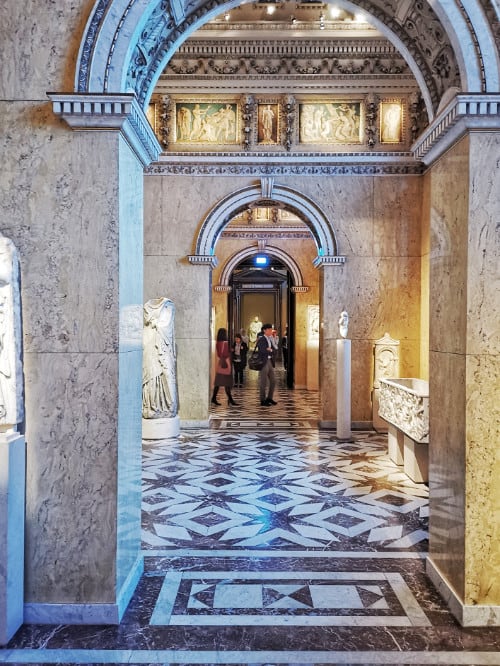
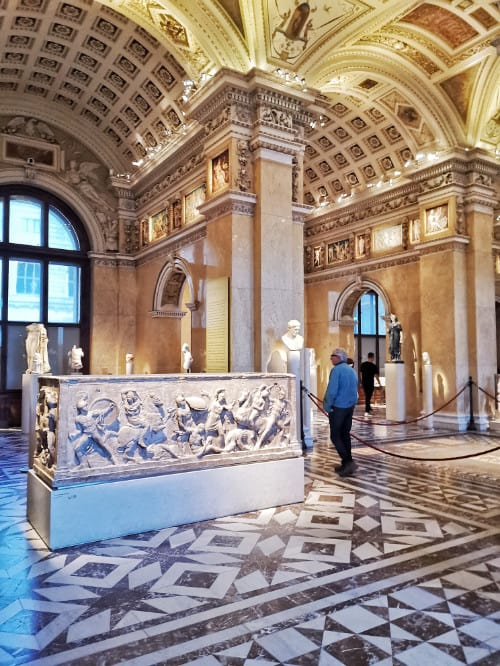
Kunsthistorisches – Museum Museum of Fine Art
It is located in Maria-Theresien-Platz and it was opened in 1891, at the same time as the Natural History Museum, by Emperor Franz Joseph I.
The primary collection is from the Habsburg, moreover, it has an incredible Egyptian collection, as well, as a Greek and Roman Collection.
The cabinet of art is one of the most important collections of its kind, not to mention that it has an Ephesos collection, as well as a coin collection and the imperial Armory collection.
Entry ticket: 16 euro
Naturhistorisches Museum – Natural History Museum
It is located in front of the Kunsthistorische Museum and is one of the most important natural history museums in the world. Also, is one of the largest museums with more than 100.000 objects. The earliest collection has more than 250 years and in 1750 the Emperor Franz I Stephan of Lorraine, the husband of Maria Theresa, who purchase at that time the largest and the most natural history objects from Jean de Baillou, a Florentine scholar and Scientist.
Entry ticket: 12 euro
